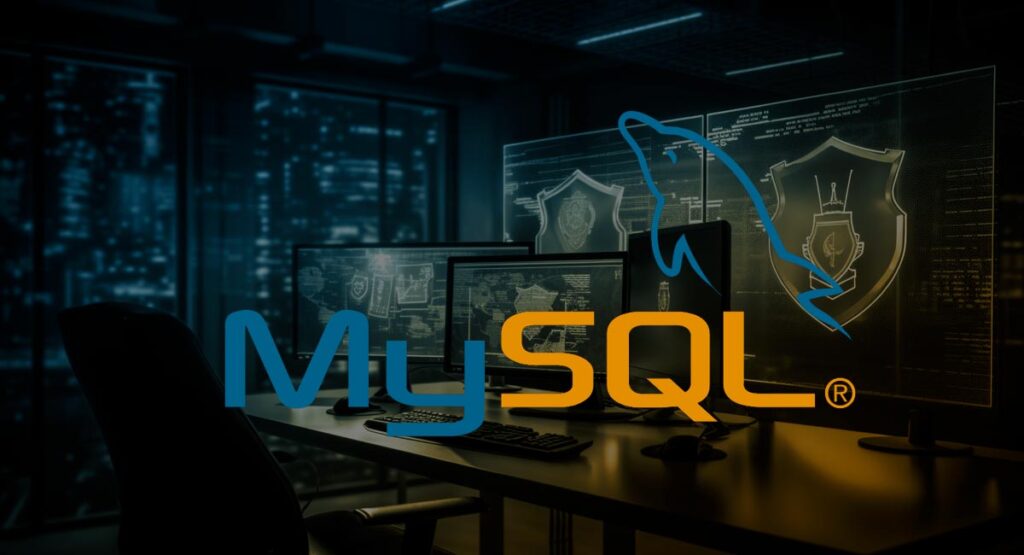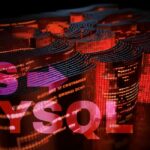MySQL, a name that resonates with many in the tech industry, is a cornerstone of modern database management. But what exactly is it, and why is it so popular? This article aims to demystify MySQL for beginners, offering a comprehensive overview of its functionalities, benefits, and applications. By the end of this read, you’ll have a solid understanding of MySQL’s foundational concepts and be well on your way to harnessing its power for your projects.
In this article, we will delve deep into the world of MySQL, exploring its history, its core features, and how it compares to other database systems. We’ll also provide practical insights on how to get started with MySQL, ensuring that even those with no prior database experience can grasp its intricacies. Whether you’re a budding developer, a business owner looking to understand the backend of your website, or simply a tech enthusiast, this article promises valuable insights for all.
MySQL for Beginners
Table of Contents
- What is MySQL?
- Core Features
- MySQL vs. Other Databases
- Getting Started with MySQL
- Frequently Asked Questions
- Final Thoughts
- Sources
What is MySQL?
MySQL is an open-source relational database management system (RDBMS). But what does that mean? Let’s break it down:
- Open-Source: This means that MySQL’s source code is available to the public. Developers can view, modify, and distribute the software freely. This open nature has fostered a large and active community around MySQL, leading to continuous improvements, extensive documentation, and a wealth of online resources.
- Relational Database: Unlike non-relational databases that store data as documents or key-value pairs, relational databases organize data into structured tables. These tables are interrelated, meaning they can reference each other, which allows for complex queries and operations. The “relational” aspect comes from the relationships between tables, typically established through primary and foreign keys.
- Management System: This refers to the software that manages databases. It provides functionalities to add, retrieve, update, and delete data. Additionally, it ensures data integrity, manages user access, and optimizes performance.
At its core, MySQL uses Structured Query Language (SQL), which is a standardized language for managing and querying data in relational databases. SQL allows users to perform a wide range of tasks, from simple data retrieval to complex data manipulation and analysis.
Why is MySQL Popular?
Several factors contribute to MySQL’s widespread popularity:
- Cost-Effective: Being open-source, MySQL is free to use, which makes it an attractive option for startups and businesses looking to minimize costs.
- Performance: MySQL is known for its fast performance. It uses a storage engine called InnoDB, optimized for high performance and reliability.
- Cross-Platform: MySQL is cross-platform, meaning it can run on various operating systems, including Windows, Linux, and macOS.
- Security: MySQL offers a robust security system. It includes features like encrypted data communication, password hashing, and user access privileges.
- Scalability: Whether you’re running a small website or a large-scale application, MySQL can handle it. It’s designed to manage large amounts of data and can be scaled up or down based on requirements.
- Community and Support: With a vast community of developers and enthusiasts, finding solutions to problems or getting advice on best practices is relatively easy. Additionally, for enterprises that require it, Oracle offers premium support services.
MySQL is a powerful, reliable, and efficient RDBMS that has stood the test of time, making it a top choice for developers and businesses worldwide. Whether you’re building a personal blog, an e-commerce site, or a complex application, MySQL offers the tools and flexibility to manage your data effectively.
Core Features
MySQL, as one of the leading relational database management systems, boasts a wide array of features that cater to a range of needs, from small-scale applications to enterprise-level systems. Let’s delve deeper into its core features:
1. Performance Optimization
- InnoDB Storage Engine: MySQL’s default storage engine, InnoDB, is transaction-safe and provides support for foreign keys, ensuring data integrity and high performance.
- Memory Caching: MySQL uses memory storage for caching data and indexes, which significantly speeds up data retrieval operations.
- Query Caching: Frequently used queries and their results are stored in a cache, reducing the need to repeatedly access the disk and speeding up query execution.
2. Reliability and Data Integrity
- ACID Compliance: MySQL is ACID-compliant (Atomicity, Consistency, Isolation, Durability), ensuring that database transactions are processed reliably.
- Transaction Management: Supports commit, rollback, and crash recovery features to manage transactions effectively.
- Foreign Key Constraints: These ensure data integrity by enforcing rules on relational tables.
3. Security Features
- Data Encryption: MySQL provides encryption for data at rest and during transit, ensuring that sensitive data remains secure.
- User Access Control: Administrators can grant or revoke privileges to specific users, controlling who can access and modify the database.
- Password Security: MySQL uses password hashing, ensuring that passwords are securely stored.
4. Scalability and Flexibility
- Replication: MySQL supports master-slave and master-master replication, allowing data to be copied across multiple servers for backup and scalability purposes.
- Partitioning: Large tables can be divided into smaller, more manageable pieces, yet treated as a single table.
- Sharding: Distributing data across multiple databases or servers to improve performance and manageability.
5. Extensibility and Customization
- User-Defined Functions (UDFs): Developers can extend MySQL’s built-in functionality by creating custom functions.
- Plug-in API: Allows developers to add new features and modify existing ones.
6. Cross-Platform Support
MySQL is platform-independent and can run on various operating systems, including Windows, Linux, macOS, and UNIX.
7. Comprehensive Tooling
- MySQL Workbench: An integrated environment for database design, SQL development, administration, and migration.
- Backup and Recovery: Tools like
mysqldumpandmysqlhotcopyallow for efficient data backup and recovery. - Monitoring and Health: MySQL provides utilities and tools for monitoring database health, performance metrics, and potential issues.
8. Support for JSON
MySQL offers native JSON support, allowing for efficient storage, search, and manipulation of JSON data.
9. Connectors
MySQL provides connectors for various programming languages, including Java, Python, PHP, .NET, and more, ensuring seamless integration with different applications.
MySQL’s core features make it a versatile and robust RDBMS, suitable for a wide range of applications. Its emphasis on performance, security, and reliability, combined with its extensibility and comprehensive tooling, ensures that it remains a top choice for developers and businesses alike.
MySQL vs. Other Databases
The database landscape is vast, with each system offering unique features and advantages. When comparing MySQL to other databases, it’s essential to consider various factors, including data model, performance, scalability, and use cases. Let’s explore how MySQL stacks up against some of the other popular database systems:
1. MySQL vs. PostgreSQL
- Open-Source Nature: Both MySQL and PostgreSQL are open-source RDBMS, but PostgreSQL is often referred to as more “open” due to its permissive license, allowing for greater customization and modification.
- Performance: While both databases offer high performance, PostgreSQL is often favored for larger datasets and more complex queries, especially when involving multiple joins.
- Features: PostgreSQL boasts some advanced features not present in MySQL, such as table inheritance and a more extensive set of data types, including arrays and hstore.
- Extensions: PostgreSQL’s extensibility is one of its strong suits, with support for a wide range of extensions, including PostGIS for spatial data.
2. MySQL vs. MongoDB
- Data Model: The most significant difference is that MySQL is a relational database, while MongoDB is a NoSQL document-oriented database. MongoDB stores data in JSON-like documents, allowing for more flexible and scalable data models.
- Schema: MySQL requires a predefined schema based on tables, rows, and columns. In contrast, MongoDB’s schema-less nature allows for diverse data structures within a single collection.
- Scalability: MongoDB is designed for horizontal scalability using sharding, making it suitable for handling vast amounts of data.
- Use Cases: While MySQL is versatile, MongoDB shines in scenarios requiring rapid application evolution, large volumes of unstructured data, or real-time analytics.
3. MySQL vs. SQLite
- Deployment: SQLite is a serverless, self-contained database engine, while MySQL requires server installation and configuration.
- Size: SQLite is lightweight, making it ideal for embedded systems, mobile apps, and desktop applications. MySQL, on the other hand, is more suited for web applications and large-scale systems.
- Concurrency: MySQL supports high concurrency, allowing multiple users to access the database simultaneously. SQLite has limited concurrency and is best suited for single-user applications.
- Transactions: Both databases support ACID transactions, but SQLite’s write operations lock the entire database, potentially causing delays in multi-user scenarios.
4. MySQL vs. Oracle Database
- Licensing: While MySQL is open-source, Oracle Database is proprietary. This difference impacts cost, with Oracle often being more expensive, especially for enterprise features.
- Performance: Oracle Database offers advanced performance optimization features, making it suitable for large enterprises with extensive data processing needs.
- Features: Oracle Database boasts a plethora of advanced features, tools, and extensions, catering to complex enterprise requirements.
- Complexity: Oracle Database is often seen as more complex to set up and manage than MySQL, requiring specialized knowledge and expertise.
5. MySQL vs. Microsoft SQL Server (MSSQL)
- Platform: While MySQL is cross-platform, MSSQL is primarily designed for Windows, though recent versions offer Linux support.
- Integration: MSSQL integrates seamlessly with other Microsoft products, making it a preferred choice for businesses invested in the Microsoft ecosystem.
- Tools: MSSQL comes with a range of tools, like SQL Server Integration Services (SSIS) and SQL Server Reporting Services (SSRS), enhancing its capabilities.
- Licensing: MSSQL’s licensing costs can be higher than MySQL’s, especially for the enterprise edition.
While MySQL is a robust and versatile RDBMS suitable for a wide range of applications, the choice of database often depends on specific project requirements, budget, and familiarity with the system. Each database has its strengths, and understanding these can guide developers and businesses in making informed decisions.
Getting Started with MySQL
Embarking on your journey with MySQL can be both exciting and a tad overwhelming given its vast capabilities. However, with a structured approach, you can quickly become proficient. Here’s a step-by-step guide to help you get started with MySQL:
1. Installation
- Download: Visit the official MySQL website to download the MySQL Community Server, which is the free version of MySQL.
- Platform-Specific Instructions: MySQL provides installation guides for various platforms, including Windows, Linux, macOS, and others. Follow the instructions specific to your operating system.
- Post-Installation: After installation, ensure that the MySQL server is running. You can usually start it using system-specific commands or through system utilities.
2. Setting Up Your Environment
- MySQL Shell: Once installed, you can access the MySQL shell, a command-line client, by typing
mysqlin your terminal or command prompt. - MySQL Workbench: This is a graphical tool provided by MySQL for database design, SQL development, and administration. It’s especially useful for those who prefer a GUI over the command line.
3. Creating Your First Database
- Command Line: In the MySQL shell, use the command
CREATE DATABASE your_database_name;to create a new database. - MySQL Workbench: Use the ‘create new schema’ button or option in the navigator pane to create a new database.
4. Basic SQL Commands
Familiarize yourself with some fundamental SQL commands:
- SELECT: Used to retrieve data from a table. E.g.,
SELECT * FROM table_name;retrieves all data from a specific table. - INSERT: Adds new data to a table. E.g.,
INSERT INTO table_name (column1, column2) VALUES (value1, value2);. - UPDATE: Modifies existing data. E.g.,
UPDATE table_name SET column1 = value1 WHERE condition;. - DELETE: Removes data from a table. E.g.,
DELETE FROM table_name WHERE condition;.
5. Understanding Data Types
MySQL supports various data types, including:
- Numeric (e.g., INT, FLOAT)
- Date and Time (e.g., DATE, TIMESTAMP)
- String (e.g., VARCHAR, TEXT)
It’s essential to understand these when creating tables and inserting data.
6. Designing and Creating Tables
- Use the
CREATE TABLEstatement to define and create tables. Ensure you specify the columns, their data types, and any constraints (like primary keys). - For relational designs, understand concepts like primary keys, foreign keys, and normalization.
7. Securing Your MySQL Installation
- Set Root Password: If not set during installation, ensure you set a password for the root user using the
ALTER USERcommand. - Create Users: Instead of using the root user for all operations, create specific users with limited privileges using the
CREATE USERandGRANTcommands. - Regular Backups: Use tools like
mysqldumpto take regular backups of your databases.
8. Exploring Advanced Features
Once you’re comfortable with the basics, delve into advanced topics like:
- Stored procedures and functions
- Triggers and events
- Indexing for performance optimization
- Replication and clustering for scalability and high availability
9. Resources and Learning
- Official Documentation: The MySQL official documentation is a comprehensive resource covering all aspects of MySQL.
- Tutorials and Courses: Numerous online platforms offer tutorials, courses, and certifications on MySQL, catering to beginners and advanced users alike.
10. Joining the Community
Engage with the MySQL community through forums, mailing lists, and user groups. It’s a great way to learn, seek help, and contribute back.
Starting with MySQL requires a mix of understanding theoretical concepts and hands-on practice. As you dive deeper, you’ll appreciate its capabilities and the vast array of solutions it offers for data management and operations.
Frequently Asked Questions
Final Thoughts
Databases are the backbone of many modern applications, and MySQL stands as one of the most trusted and widely-used RDBMS in the world. Its blend of performance, reliability, and ease of use makes it an excellent choice for beginners and professionals alike. The most crucial takeaway is that, with a solid understanding of MySQL, you’re equipping yourself with a skill that’s both timeless and invaluable in the tech industry.
Sources
- Official MySQL Documentation
- Widenius, Michael, and David Axmark. MySQL Reference Manual. O’Reilly Media, Inc., 2002.
- Oracle’s Acquisition of Sun Microsystems
I write for and assist as the editor-in-chief here on Host Screamer. I’m a digital entrepreneur since 1992. Always Keep Learning! Notice: All content is published for educational and entertainment purposes only. NOT LIFE, HEALTH, SURVIVAL, FINANCIAL, BUSINESS, LEGAL OR ANY OTHER ADVICE. Learn more about Mark Mayo


